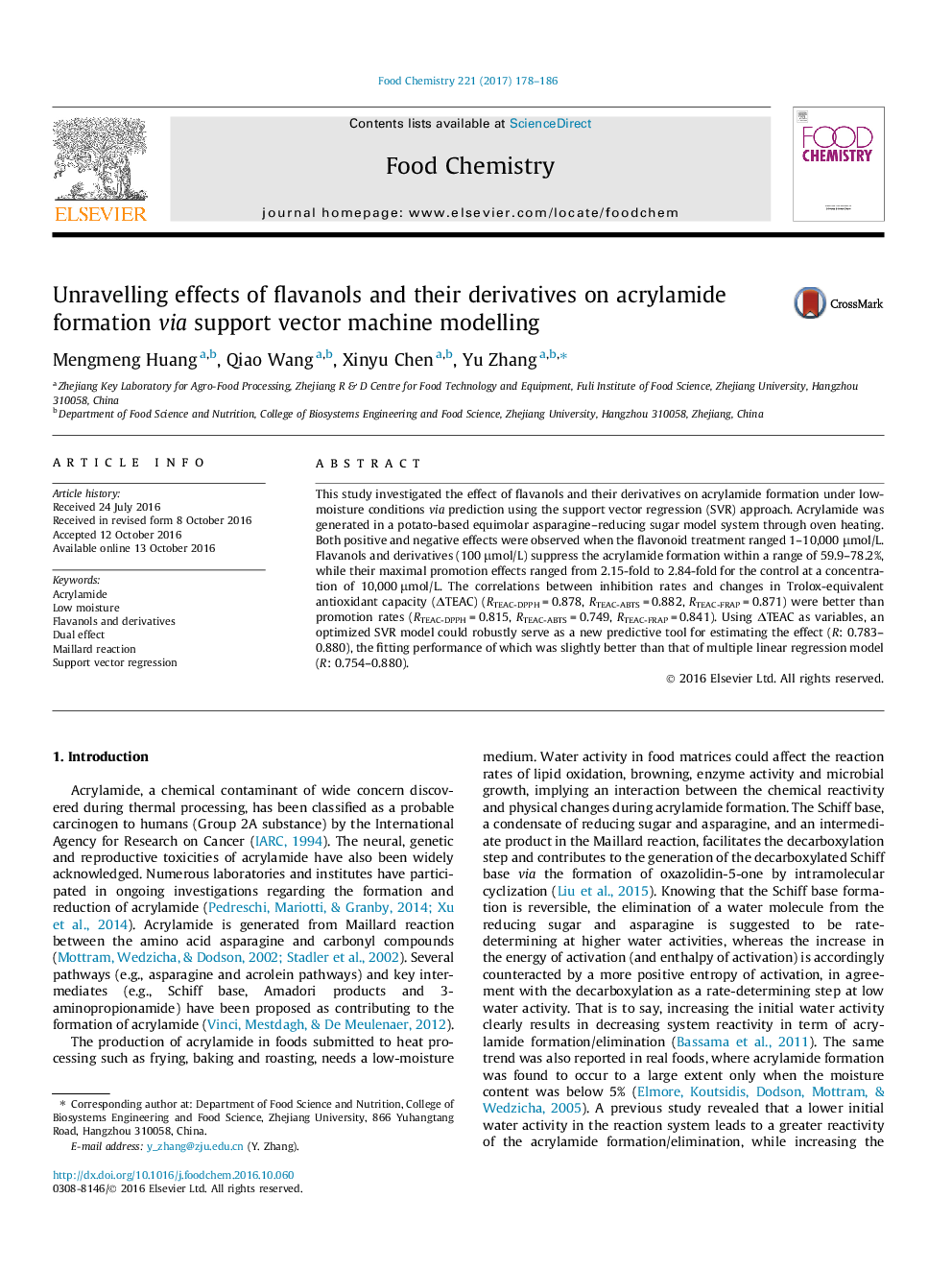| Article ID | Journal | Published Year | Pages | File Type |
|---|---|---|---|---|
| 5133728 | Food Chemistry | 2017 | 9 Pages |
â¢Support vector regression model predicts acrylamide formation.â¢Flavanols and derivatives exhibit dual effects in a low-moisture system.â¢The inhibition and promotion effects are non-linear and bell-shaped dose-dependent.â¢Flavanols and derivatives with more phenolic hydroxyls both show greater effects.â¢Both effects are related to antioxidant changes of low-moisture heating products.
This study investigated the effect of flavanols and their derivatives on acrylamide formation under low-moisture conditions via prediction using the support vector regression (SVR) approach. Acrylamide was generated in a potato-based equimolar asparagine-reducing sugar model system through oven heating. Both positive and negative effects were observed when the flavonoid treatment ranged 1-10,000 μmol/L. Flavanols and derivatives (100 μmol/L) suppress the acrylamide formation within a range of 59.9-78.2%, while their maximal promotion effects ranged from 2.15-fold to 2.84-fold for the control at a concentration of 10,000 μmol/L. The correlations between inhibition rates and changes in Trolox-equivalent antioxidant capacity (ÎTEAC) (RTEAC-DPPH = 0.878, RTEAC-ABTS = 0.882, RTEAC-FRAP = 0.871) were better than promotion rates (RTEAC-DPPH = 0.815, RTEAC-ABTS = 0.749, RTEAC-FRAP = 0.841). Using ÎTEAC as variables, an optimized SVR model could robustly serve as a new predictive tool for estimating the effect (R: 0.783-0.880), the fitting performance of which was slightly better than that of multiple linear regression model (R: 0.754-0.880).
